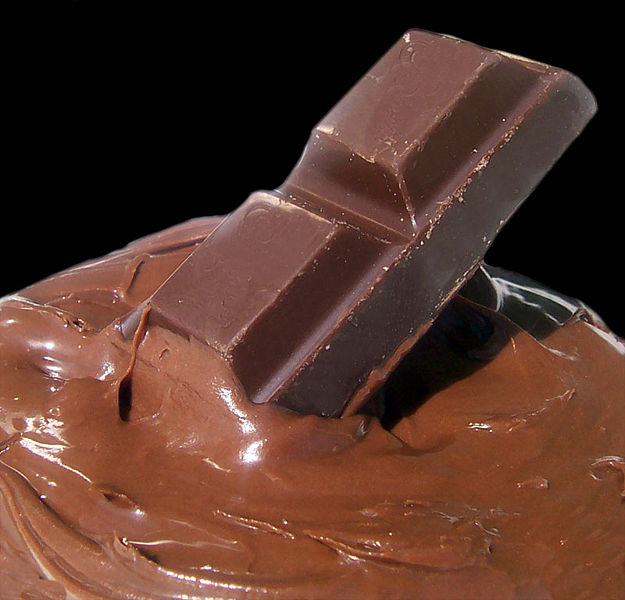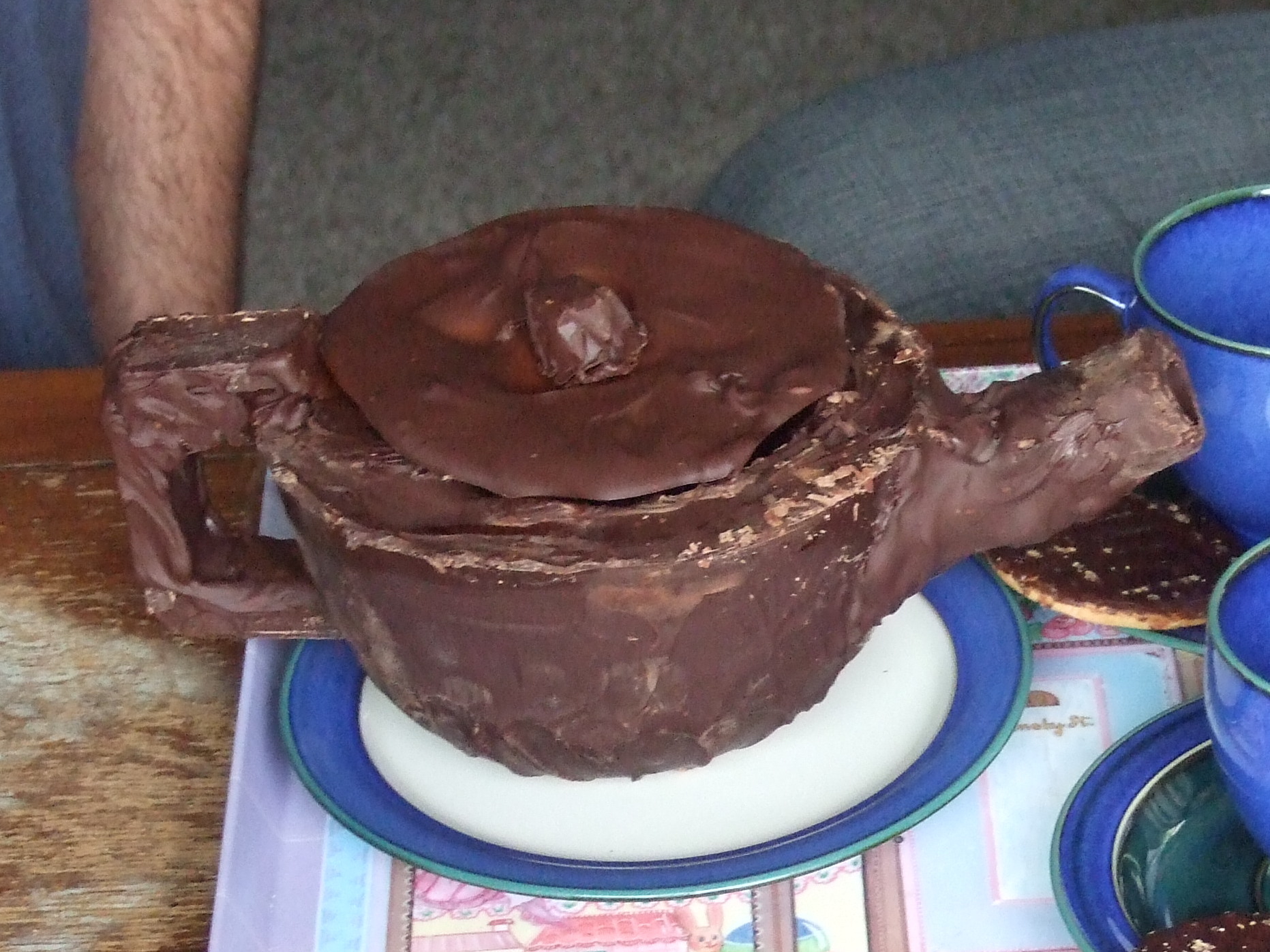Ingredients
 |  |
| A very, very large amount of chocolate | Some tea |
Instructions
Part of the reason that chocolate is so irresistible is the way that it is made up of a variety of fats, both from the cocoa bean and in many cases milk or even vegetable. These fats happen to melt at just below body temperature so the chocolate melts in your mouth. This is why chocolate is so obviously a bad material for making teapots, hence the phrase "as useless as a chocolate teapot"!
However, James called in to the show to ask how thick the walls of a chocolate teapot would need to be to be able to brew tea in it, so in the best tradition of Kitchen Science, we set out to find out the answer to this critical question.
The obvious way to find out how thick you would have to make a chocolate teapot is to make a series of chocolate teapots with walls of various thicknesses and test them by brewing tea. However this would take rather a long time and involve truly stupendous amounts of chocolate (as opposed to just ridiculous amounts). We decided to do a series of tests on a small amount of chocolate in order to find out roughly how much we would need for the teapot. Chocolate is a very complex substance and it doesn't melt in a simple way - it goes through a series of stages where it becomes gradually more fluid. The teapot could melt enough to become flexible and then the pressure of the tea could cause it to distort and empty its contents onto the floor, without actually melting through the walls. This means that just finding out whether it melts or not isn't very useful. So we needed an experiment that modelled being part of a chocolate teapot wall as closely as possible, while using a sane amount of chocolate.
So we got several short pieces of perspex tubing and poured various amounts of molten chocolate into the bottom to form a plug of chocolate in the bottom of each tube. We then added boiling water of a similar depth to a teapot. We then waited to see when the chocolate plugs would fail. As we had no idea how thick the chocolate would have to be, we made a series of chocolate plugs ranging from 10mm to 80mm. We also used dark chocolate to give the teapot the best chance possible, as this has a higher melting point than milk or white chocolate. We also left all the chocolate in the fridge until a few minutes before the experiment. As it turned out only the 10mm thickness of chocolate failed and even that took about 3 minutes - almost as long as it takes to brew some tea! Armed with this knowledge we set out to manufacture a chocolate teapot. As 10mm of chocolate wasn't quite enough to brew tea properly and a real teapot is larger than our model and so would undergo larger forces, we decided to make the walls approximately 20mm thick. The teapot was made by melting down about 1.3kg of chocolate, pouring some into the bottom of a bowl and allowing it to set to form a base. We then put a smaller bowl in the middle to form an inner mould and pouring chocolate in between the two bowls. Removing the bowls was quite easy once you heated them up with boiling water. We then made a spout using two cylinders of grease proof paper which chocolate generously splurged in between. We then drilled a hole into the side of the 'bowl' using a potato peeler and welded the spout back on using some more molten chocolate. We also made a handle using more chocolate and welded that on, though this was more for appearance rather than any real practical purpose! We then used the leftover chocolate to make a rather insubstantial lid, to complete the appearance of a genuine teapot. The moment of truth then arrived and we tried to brew a pot of tea, so we put in a couple of (earl grey) teabags, added some boiling water, put on the lid, and waited... Manufacturing the teapot



A small proportion of the chocolate we used The teapot setting in the fridge The aftermath
Result
After only about half a minute the lid started to melt, but otherwise the teapot survived its experience in one piece if not entirely unscathed. The tea was slightly unusual and sweet, but not unpleasant.
The teapot survived, but not completely unscathed... So a chocolate teapot is really not very useful, but slightly more so than you would expect, which is an interesting reinterpretation of the old adage! Now all we have to do is work out what to do with 1.3kg of chocolate, and enjoy our tea! 


The lid was not really up to the job. The hot water vapour rising from the tea rapidly melted it. 


However the rest of the teapot was fine for one pot of tea! Although after the second the spout looked a bit warm. And soon, much too warm. 
Conclusion
Explanation
When chocolate melts it doesn't become totally liquid immediately, it remains quite viscous. Unless you apply a fairly large force to the melted chocolate, it seems to sit there. Chocolate is also mostly made of fat, which is a good thermal insulator (whales use blubber as a form of insulation). This means that the molten chocolate near the hot water protects the less molten chocolate below it, insulating it from the heat of the water.
Also, it takes a significant amount of energy to melt chocolate, so it will take a significant amount of time to move heat into the solid chocolate, thus slowing its melting.
 |  |
| The construction of the teapot | The layer of molten chocolate is viscous, and so it doesn't flow away easily. It then sits as protective layer, insulating the solid chocolate below from the hot water above. |
- Previous Whirling forces
- Next Swinging for the Sweet Spot










Comments
Add a comment